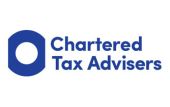
Upper Tribunal decision in M Group: Not what we hoped for
Key points
- The Upper Tribunal dismissed all of the company’s grounds of appeal and affirmed the FTT’s decision.
- The company had put forward three grounds of appeal, one based on whether it is possible to have a group consisting of a single company, and two others arguing the correct interpretation of TCGA 1992, Sch 7AC para 15A(2) and (3).
- The company had contended that HMRC’s interpretation of the legislation led to absurd results.
- The genesis of what became para 15A was a comment that the SSE directly discriminates against singleton companies with separate trading divisions.
The background to this case is described in more detail in my article ‘Substantial disappointment’ about the First-tier Tribunal (FTT) decision in M Group Holdings Ltd (TC8054) (Taxation, 10 June 2021). Much to my chagrin, the Upper Tribunal has confirmed that decision.
Background
In brief, to facilitate the sale of the trade of M Group Ltd (MGL), a new subsidiary, Medinet Clinical Services Ltd (MCS), was incorporated and the trade and assets of MGL’s business were hived down. MCS was sold 11 months later for just under £55m. The intention was that there would be no corporation tax on the chargeable gain due to the substantial shareholding exemption (SSE). HMRC disagreed and charged MGL around £10.6m in corporation tax.
Substantial shareholding exemption
The company relied on TCGA 1992, Sch 7AC para 15A which exempts gains in these circumstances, subject to the conditions at para 15A(2)(a) to (d), which reads as follows (company names inserted for clarity):
a) immediately before the disposal, the investing company (MGL) holds a substantial shareholding in the company invested in;
b) that an asset which, at the time of the disposal, is being used for the purposes of a trade carried on by the company invested in was transferred to it by the investing company (MGL) or another company;
c) that, at the time of the transfer of the asset, the company invested in (MCS), the investing company (MGL) and, if different, the company which transferred the asset were all members of the same group; and
d) that the asset was previously used by a member of the group (MGL) (other than the company invested in (MCS)) for the purposes of a trade carried on by that member at a time when it was such a member.
If those conditions are satisfied, para 15A(3) provides that the investing company, MGL, is to be treated as having held the substantial shareholding for the period when the asset was used as mentioned in sub-para (2)(d) (if it did not hold a substantial shareholding at that time) and MCS is to be treated as being a trading company for the same period (TCGA 1992, Sch 7AC para 19(2B)).
It was accepted that the conditions at (a) to (d) were satisfied for 11 months. HMRC’s interpretation is that MGL is therefore treated as only holding the MCS shares for the 11-month period, and MCS should only be treated as a trading company for the same period, so no exemption was due. The company contended that para 15A(2)(d) did not require MGL to be a member of a group for a full year, as long as the trade had been carried on by MGL for at least a year, which was the case, so the exemption was due. This has also always been my view of the intention of the legislation.
Both parties agreed that, had MCS been in existence for a full year before the disposal, the SSE would have exempted the gain on the disposal. From the company’s perspective, the disposal was a month or so too early.
The arguments
The company put forward three grounds of appeal, one based on whether it is possible to have a group consisting of a single company, and two others arguing the correct interpretation of sub-paras (2) and (3) of para 15A.
The first of these is a new argument, which effectively suggested that a group existed for more than 12 months before the disposal, on the basis that MGL constituted a group of one company prior to the incorporation of MCS, so that there had, indeed, been a group for at least a year prior to the disposal of MCS. In support of this argument, the tribunal was asked to imagine that a group of schoolchildren was split into two groups, one comprising those who have reached a certain level and the other comprising those who have not. It was conceivable that, if only one child had, or had not, reached that level, one of the groups would only have a single member.
The tribunal preferred HMRC’s arguments that, firstly, any dictionary definition of a group would require more than one member and, secondly, that it was clear from the definition of a group in the capital gains legislation that there must be more than one company, as there has to be a principal company and at least one subsidiary (TCGA 1992, s 170). The tribunal also noted that ‘statutory interpretation is an exercise which requires the court to identify the meaning born by the words in question in the particular context’ (quoting Lord Nicholls in Spath Holme [2001] 2 AC 396), and highlighted the fact that the SSE, generally, and para 15A, specifically, referred to a ‘group’ in a context that made it clear that the group had to consist of more than one company. Overall, therefore, despite what was described as a ‘valiant attempt’ on behalf of the company, this argument was dismissed.
In looking at para 15A(3), HMRC said there were three sub-conditions in para 15A(2)(d): the asset that had been transferred had to have been previously used by a member of the group; the asset must have been used for the purposes of trade by that member; and both conditions had to have been met at a time when the member was a member of the group. The company agreed with the first two of these, but not with the third (the ‘temporal aspect’). The tribunal preferred HMRC’s approach. Firstly, they agreed with HMRC that ‘the natural or ordinary meaning of the words’ meant that all three sub-conditions had to be satisfied and that there was no justification for the company’s suggestion that the temporal aspect should be viewed differently.
In terms of the purpose of para 15A, the tribunal noted that they were required ‘to give the statutory provision a purposive construction’, so that they needed ‘to determine the nature of the transaction to which it was intended to apply and then to decide whether the actual transaction answers to the statutory description’. The tribunal took the view, as did the FTT, that ‘the wording of the provision is entirely focused on groups of companies and what is happening to assets used by members of the group when a member of the group’. This partly reflects the FTT’s reference to the fact that the provisions, which were enacted in FA 2011, arose from a review of the impact of the capital gains rules on groups of companies. The tribunal also referred to both the explanatory notes to the introduction of the FA 2011 changes and to the consultation document published in February 2010 and confirmed that ‘the proposals were expressly contemplated in the context of a group’.
The company also contended that HMRC’s interpretation of the legislation led to absurd results. If this were so, then the rules of statutory interpretation might allow the tribunal to interpret the legislation in a way that removed the absurdity. The company pointed out that, for example, it was absurd that relief was denied under the circumstances of the actual transaction, but the exemption would have been granted had the transaction taken place a month later. Similarly, had MGL had a dormant subsidiary for at least a year prior to the disposal, the relief would have been available, even though MCL had only been in existence for 11 months at the time of the disposal.
HMRC’s proposition, however, was that the whole of para 15A was focused on groups of companies and that the interpretation they proposed did not lead to an absurd result in this context. The tribunal had already noted that, ‘the courts will not interpret a statute so as to produce an absurd result, unless clearly constrained to do so by the words parliament has used’ (quoting Lord Sales in the recent case of R (PACCAR Inc) v Competition Appeal Tribunal [2023] UKSC 28). So, another way of looking at the arguments on this point is that HMRC was saying that, even if the legislation gave an absurd result, this arose from the clear words of the legislation, so the tribunal was ‘clearly constrained … by the words parliament has used’.
The tribunal noted that para 15A is ‘prescriptive in nature’ and the prescribed conditions cannot be ‘ignored to achieve a wholly different outcome from that which may or may not have been contemplated by parliament’. The purpose of the provision was ‘to extend SSE in certain circumstances solely for groups of companies’. They noted that the Supreme Court had said in SACCAR that judges cannot ‘interfere with the “policy chosen by the legislature, which may be reasonable in its own estimation. The constitutional position that legislative choice is for parliament cannot be undermined under the guise of the presumption against absurdity”’ (paragraph [43] of the Supreme Court judgment).
They also noted that ‘it is curious that the appellant simply failed to comply with a specific time requirement’ and that ‘bright lines are a common feature of tax legislation particularly in respect of time limits’. They did not ‘see the bright light of the 12-month holding requirement as unjust even on the hypothetical situation of selling only one day early’. Overall, they said that the worst that could be said of the provision is that it ‘might produce an anomalous result’ but that the result is not absurd or one that leads to injustice, which was ‘insufficient to depart from the clear meaning’.
The arguments around the interpretation of para 15A(2)(d) overlap somewhat with the previous arguments over the interpretation of para 15A(3). The company said that words should be read into para 15A(2)(d) to give effect to what they said was the intention of parliament, that the provision should apply equally to a stand-alone company, so that the provision should be read such that it would apply if ‘the asset was used by the investing company or a member of the group’ and not just, as now, by a member of the group when it was a member of the group. The company said that discriminating against a singleton company was ‘an obvious mistake’.
HMRC, of course, argued that the provision was always intended only to apply in a group situation and, once again, the tribunal agreed with HMRC. They noted that the circumstances in which words can be read into legislation are rare and tightly constrained by the rules of statutory interpretation. Words can only be read in ‘plain cases of drafting mistakes’. Since parliament had deliberately referred to a ‘member of the group’, there was no mistake in the drafting.
Overall, therefore, the Upper Tribunal dismissed all of the company’s grounds of appeal and affirmed the FTT’s decision.
Discussion
A lot of the arguments revolved around the idea that the legislation was only intended to apply to groups of companies and that the wording of the legislation reflected this intention. For example, both HMRC and the Upper Tribunal concentrated on the fact that the SSE is part of the capital gains legislation relating to groups of companies, and the FTT had noted that the legislation enacted in 2011 arose originally from a review of the impact of the capital gains legislation on groups of companies.
All of this is, of course, completely true. However, I was part of the steering group that HMRC convened during 2010 to help review the impact of the capital gains rules on groups of companies. My recollection is that the genesis of what became para 15A was a comment that the SSE directly discriminates against singleton companies with separate trading divisions. The point made was that, if a business is structured so that there is a holding company with separate trading subsidiaries, the sale of those subsidiaries would be free of corporation tax on gains. However, if a similar business were set up in a single company with different divisions for each trade, the sale of a trade would not qualify for any relief from corporation tax on gains. So, my understanding of the intention behind para 15A is that it was intended to put singleton companies on a similar footing to companies organised with a group structure, so that they could also benefit from the ability to sell trading activities tax-free. Indeed, as I have commented before (and as was noted by the FTT in their judgment) I – as well as many other commentators – always thought that this was the effect of para 15A when it was originally drafted. There was substantial discussion over the form of the legislation when it was first published, and a number of workshops were convened by HMRC that were well attended, and I do not recall anyone suggesting that para 15A restricted the exemption to the group situation.
The Upper Tribunal also noted the existence of bright lines in tax legislation and that these can sometimes lead to different results due to differences of even a single day. But they also noted that the bright lines occur particularly in the areas of time limits and most people would accept that time limits serve a sensible policy purpose, which is to ensure that both HMRC and taxpayers obtain certainty of tax treatment after a period of time, so that uncertainties over tax liabilities cannot linger forever. Thus, for example, it is reasonable that there is a two-year time limit for claiming group relief, so that the companies have sufficient time to prepare appropriate accounts and decide how they wish to use any losses or other tax assets, but after the time limit has expired, HMRC has certainty over the tax liabilities of the group as a whole. So, while some of the time limits might be seen as somewhat arbitrary, they are there for a good reason.
In contrast, however, once it was accepted that a company with a number of trades should also be allowed to avail itself of the SSE, it is difficult to see why this policy should be restricted to companies that are already members of a group, rather than including singleton companies, as well. This does not serve any obvious policy reason, and the irrationality was highlighted in the arguments, when it was noted that a singleton company could bring itself within the ambit of the SSE by simply incorporating a dormant subsidiary, so that there would be a group for all future purposes of the exemption.
One might argue that such a company would serve no commercial purpose other than to allow the SSE to apply and should therefore be ignored on the basis of the Ramsay principle. For example, in the Hong Kong case Collector of Stamp Revenue v Arrowtown Assets Limited (FACV No 4 of 2003), the company had issued some shares specifically to fall within an exemption from stamp duty. But the shares were essentially valueless, had no rights to vote and no meaningful rights to dividends, and only allowed the holder to appoint a director, who would have no practical powers. As a result, the shares were ignored, as they served no commercial purpose, applying the maxim that arose from that case, that legislation should be construed purposively and applied to transactions viewed realistically (judgment of Ribeiro, PJ at [35]).
This is a hard question to answer but one can at least point to the fact that the existence of a company has legal ramifications, such as compliance requirements, that might give it a greater degree of commercial reality than the shares in the Arrowtown case. Other than that, I can only pray in aid the comment by a senior HMRC official who, when asked to explain why HMRC considered para 15A only to apply to groups of companies said that the issue did not strike him ‘as a difficult or burdensome point to plan for’. This, to me, strongly implies that he considered it acceptable to incorporate a dormant subsidiary for precisely this purpose.
It would also be interesting to see if incorporating a company for this purpose would be seen as an abusive tax arrangement, one ‘which cannot reasonably be regarded as a reasonable course of action in relation to the relevant tax provisions’, for the purposes of the UK’s general anti-abuse rule (GAAR) (FA 2013, s 207(2)). The GAAR requires us to look at all the circumstances, including:
- Whether the substantive results of the arrangements are consistent with the principles on which the relevant provisions are based and their policy objectives;
- whether the results are obtained using contrived or abnormal steps; and
- whether the arrangements are intended to exploit any shortcomings in the relevant provisions.
I can see arguments for all of the above conditions applying, particularly if it is accepted (or eventually decided, assuming that M Group is appealed further) that the principle behind para 15A is that it should only apply to groups of companies. For what it’s worth, the comment from my correspondent at HMRC predated FA 2013 and no comment was made in either of the judgments in the M Group case.
Whatever the answer in this context, it seems to me that the policy in this case, as argued by HMRC, is irrational and that there is no reason in this context why a company that organises itself into a number of divisions, rather than setting up separate subsidiaries for each trading activity, should be discriminated against in this way. The substantial shareholding exemption was originally enacted to make the UK a better place to do business and to attract foreign investment, as well as to improve the efficiency of domestic trading activities. Can anyone think of a sensible reason why those policies should be restricted to groups of companies?
I can’t help feeling that the overall result here is indicative of a wider malaise in tax policy making.
For example, while the extension of the SSE in FA 2011, and the related amendments to the capital gains degrouping rules (TCGA 1992, s 179(3A) et seq), were intended to be helpful to the UK business, they did not work in a large number (possibly a majority) of cases because the rules did not apply to intangible fixed assets that fell into the corporate intangibles regime (CTA 2009, Part 8). This lacuna was explained to HMRC during the lengthy consultations on the capital gains issues, but we were told that the corporate intangibles team had been approached but did not feel it necessary to amend ‘their’ legislation simply to remain in line with the capital gains rules. It doesn’t appear as though any consideration was given to the practical impact of their refusal to act and, indeed, it took until the changes made in FA 2019, enacting what is now CTA 2009, s 782A, to even partly resolve the dichotomy between chargeable assets and chargeable intangible assets. This sort of siloed approach to tax policy making, rather than trying to join up the tax code so that it forms a coherent whole, is something we have seen more and more in recent years, perhaps as a result of underfunding and understaffing of HMRC in all areas, so that they simply do not have the resources for a thorough and holistic approach to enacting new tax legislation.








